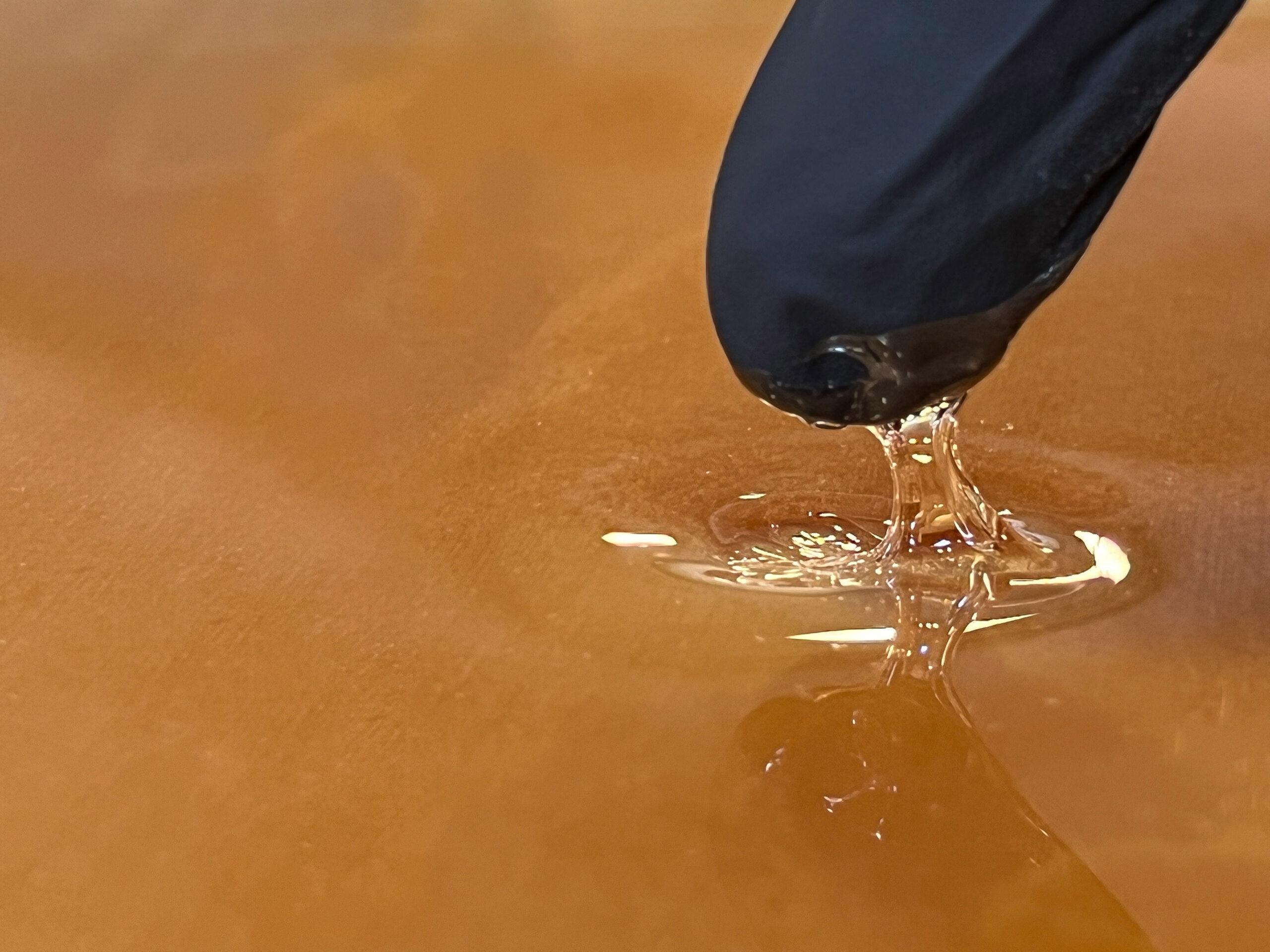Why is My Epoxy Sticky?
You mixed your resin and hardener together, applied it to your project, waited the recommended cure time and your epoxy has not hardened or cured all the way. What’s going on?
When you mix the two parts of an epoxy system together — resin and hardener — you create a chemical reaction. If your epoxy is not hardening properly, this means something probably went wrong during the mixing & curing processes, and could’ve been caused by a number of issues. Let’s look at some of the most common explanations for sticky epoxy.
Top Causes of Sticky Epoxy
Wrong Mix Ratio
We answer questions about sticky/uncured epoxy all the time. The number one cause we see is that the resin and hardener were not mixed together at the proper ratio.
Unlike polyester resins and vinylester resins, for instance, epoxy does not cure faster by adding more hardener to the mix. It simply will not cure. The only fix is to remove all the uncured epoxy and start over again. Do not coat over the top of it.
If your batch of epoxy turns out to be unusable, it’s best to take a step back. Go ahead and practice making a small test batch to be sure it cures before tackling your project again. Here are a few things to check while you do this:
- Are you using the correct mix ratio? Epoxy mix ratios are typically different if you are measuring by volume or if you are measuring by weight. Entropy Products are formulated to be a 2:1 ratio – that is, 2 parts resin to 1 part hardener by volume – but, each resin/hardener combination is different if you’re measuring the mix ratio by weight.
- Are you using an accurate measuring device? Epoxy has limits for being measured off ratio. If you are “eyeballing it”, that won’t be good enough.
- Are you using pumps?
- Are you using the correct number of pump strokes? It is two pumps of resin to every pump of hardener. (2:1)
- Are the pumps dispensing the right amount of epoxy? The pumps should dispense a continuous stream of product. If there are interruptions in this stream, your epoxy will be off ratio. Be sure your pumps are primed and functioning properly.
- How cold is it? Cold temperatures can cause the resin to increase in viscosity. This thickening of the resin can make it difficult for the pump to dispense the proper amount. Moving your resin and hardener containers to a warmer area will help the product flow easier.
Cure Temperature
Epoxy uses an exothermic reaction to cure. If the temperature of your environment gets too low during the curing process, the cure will stop. Luckily, this is an easy fix.
- If your working area’s temperature is within the recommended temperature range for the system you are using, you can simply allow more time for the epoxy to finish curing.
- If your working area’s temperature is outside of the recommended temperature range, you can move your project to a warmer environment or heat your project until it has fully cured. Heat lamps work well, but do not use unvented kerosene or propane heaters. They may prevent the epoxy from curing and contaminate the epoxy’s surface.
Improperly Mixed
Like using the wrong mix ratio, improperly mixed epoxy resin and hardener can result in a sticky mess that has to be removed.
Here are a few things you can do to avoid improperly, or insufficiently, mixed epoxy.
- Start with a clean mixing pot to avoid contaminating your epoxy.
- Stir thoroughly. When stirring your product, it is important to stir thoroughly and completely. Stir at least 1 minute for small batches, and even longer for large batches.
- Make sure there are no streaks. When you begin mixing, you’ll see streaks in the epoxy from the resin and hardener combining together. As you continue mixing, these streaks will disappear. Stir until all streaks are gone.
- Scrape the excess product off the sides, bottom, and corners of your cup as you go.
- Use a good stirring tool. Having a good stirring tool with a flat edge helps you efficiently scrape the material stuck to the sides, bottom, and corners of the cup.
Products from Different Manufacturers
When purchasing your resin and hardener, stick with one brand. Mixing and matching these products can cause more than just a sticky mess, it can be hazardous to your health. At Entropy Resins, each system has been thoughtfully formulated in-house by our eco-conscious chemists. We create high-performance, environmentally friendlier, more-sustainable epoxies – all of which is proven with scientific data. Read our how-to page for selecting the right resin and hardener for your next project.
It is always best to take your time when measuring and mixing your epoxy. Being careful at this stage of your project helps you avoid restarting or backtracking.
Check out our Tutorials for more tips on working with epoxy for your next project!

